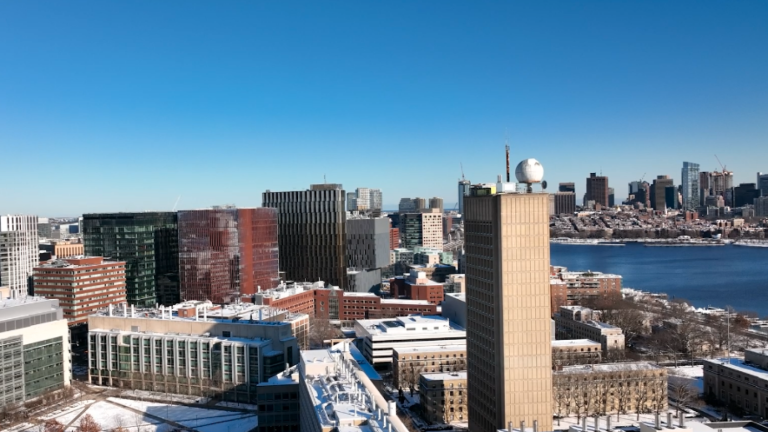
With a goal to decarbonize the MIT campus by 2050, the Institute must look at “new ideas, transformed into practical solutions, in record time,” as stated in “Fast Forward: MIT’s Climate Action Plan for the Decade.” This charge calls on the MIT community to explore game-changing and evolving technologies with the potential to move campuses like MIT away from carbon emissions-based energy systems.
To help meet this tremendous challenge, the Decarbonization Working Group — a new subset of the Climate Nucleus — recently launched. Comprised of appointed MIT faculty, researchers, and students, the working group is leveraging its members’ expertise to meet the charge of exploring and assessing existing and in-development solutions to decarbonize the MIT campus by 2050. The group is specifically charged with informing MIT’s efforts to decarbonize the campus's district energy system.
Co-chaired by Director of Sustainability Julie Newman and Department of Architecture Professor Christoph Reinhart, the working group includes members with deep knowledge of low- and zero-carbon technologies and grid-level strategies. In convening the group, Newman and Reinhart sought out members researching these technologies as well as exploring their practical use. “In my work on multiple projects on campus, I have seen how cutting-edge research often relies on energy-intensive equipment,” shares PhD student and group member Ippolyti Dellatolas. “It’s clear how new energy-efficiency strategies and technologies could use campus as a living lab and then broadly deploy these solutions across campus for scalable emissions reductions.” This approach is one of MIT’s strong suits and a recurring theme in its climate action plans — using the MIT campus as a test bed for learning and application. “We seek to study and analyze solutions for our campus, with the understanding that our findings have implications far beyond our campus boundaries,” says Newman.
The efforts of the working group represent just one part of the multipronged approach to identify ways to decarbonize the MIT campus. The group will work in parallel and at times collaboratively with the team from the Office of the Vice President for Campus Services and Stewardship that is managing the development plan for potential zero-carbon pathways for campus buildings and the district energy system. In May 2023, MIT engaged Affiliated Engineers, Inc. (AEI), to support the Institute’s efforts to identify, evaluate, and model various carbon-reduction strategies and technologies to provide MIT with a series of potential decarbonization pathways. Each of the pathways must demonstrate how to manage the generation of energy and its distribution and use on campus. As MIT explores electrification, a significant challenge will be the availability of resilient clean power from the grid to help generate heat for our campus without reliance on natural gas.
When the Decarbonization Working Group began work this fall, members took the time to learn more about current systems and baseline information. Beginning this month, members will organize analysis around each of their individual areas of expertise and interest and begin to evaluate existing and emerging carbon reduction technologies. “We are fortunate that there are constantly new ideas and technologies being tested in this space and that we have a committed group of faculty working together to evaluate them,” Newman says. “We are aware that not every technology is the right fit for our unique dense urban campus, and nor are we solving for a zero-carbon campus as an island, but rather in the context of an evolving regional power grid.”
Supported by funding from the Climate Nucleus, evaluating technologies will include site visits to locations where priority technologies are currently deployed or being tested. These site visits may range from university campuses implementing district geothermal and heat pumps to test sites of deep geothermal or microgrid infrastructure manufacturers. “This is a unique moment for MIT to demonstrate leadership by combining best decarbonization practices, such as retrofitting building systems to achieve deep energy reductions and converting to low-temperature district heating systems with ‘nearly there’ technologies such as deep geothermal, micronuclear, energy storage, and ubiquitous occupancy-driven temperature control,” says Reinhart. “As first adopters, we can find out what works, allowing other campuses to follow us at reduced risks.”
The findings and recommendations of the working group will be delivered in a report to the community at the end of 2024. There will be opportunities for the MIT community to learn more about MIT’s decarbonization efforts at community events on Jan. 24 and March 14, as well as MIT’s Sustainability Connect forum on Feb. 8.






